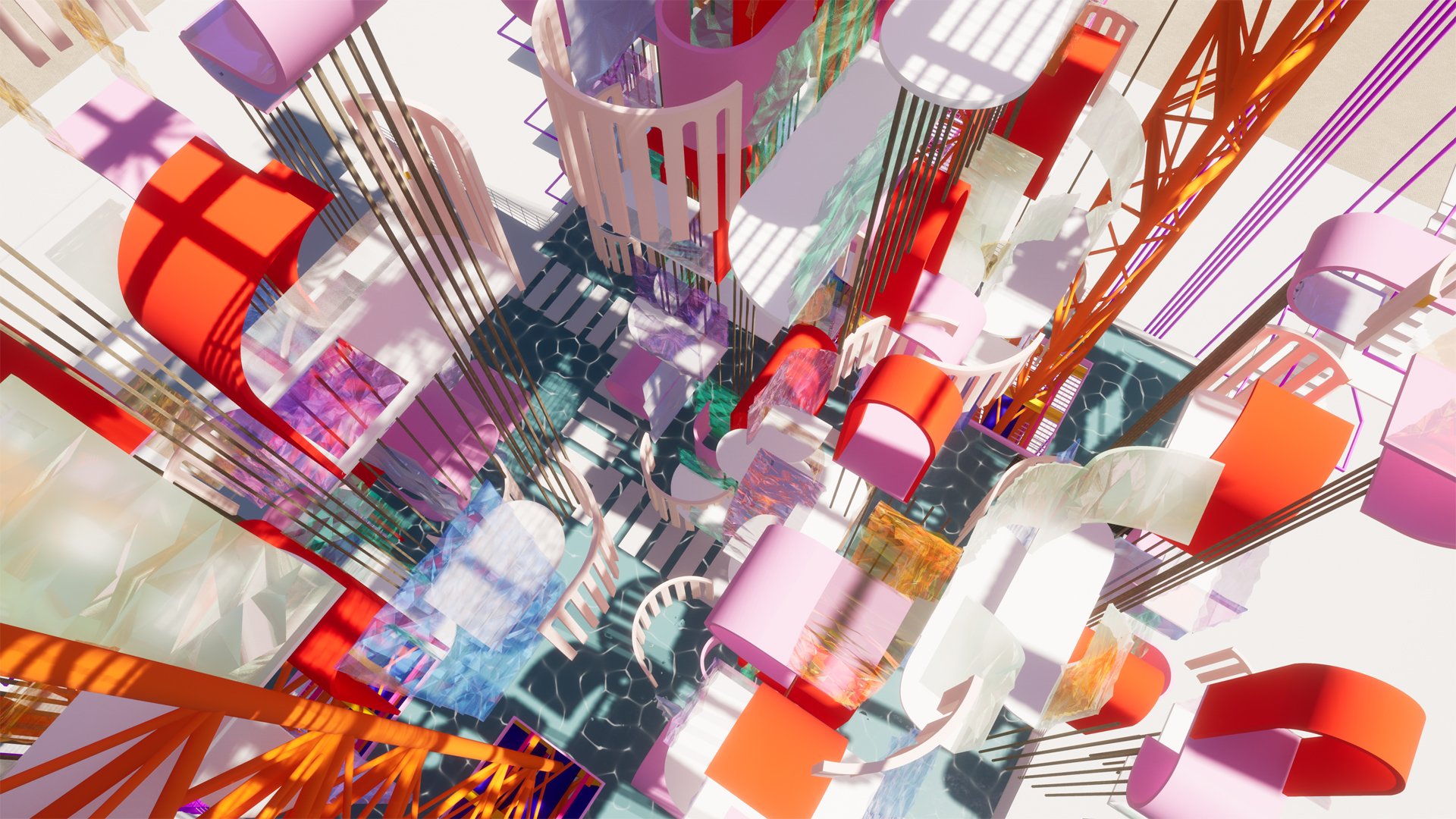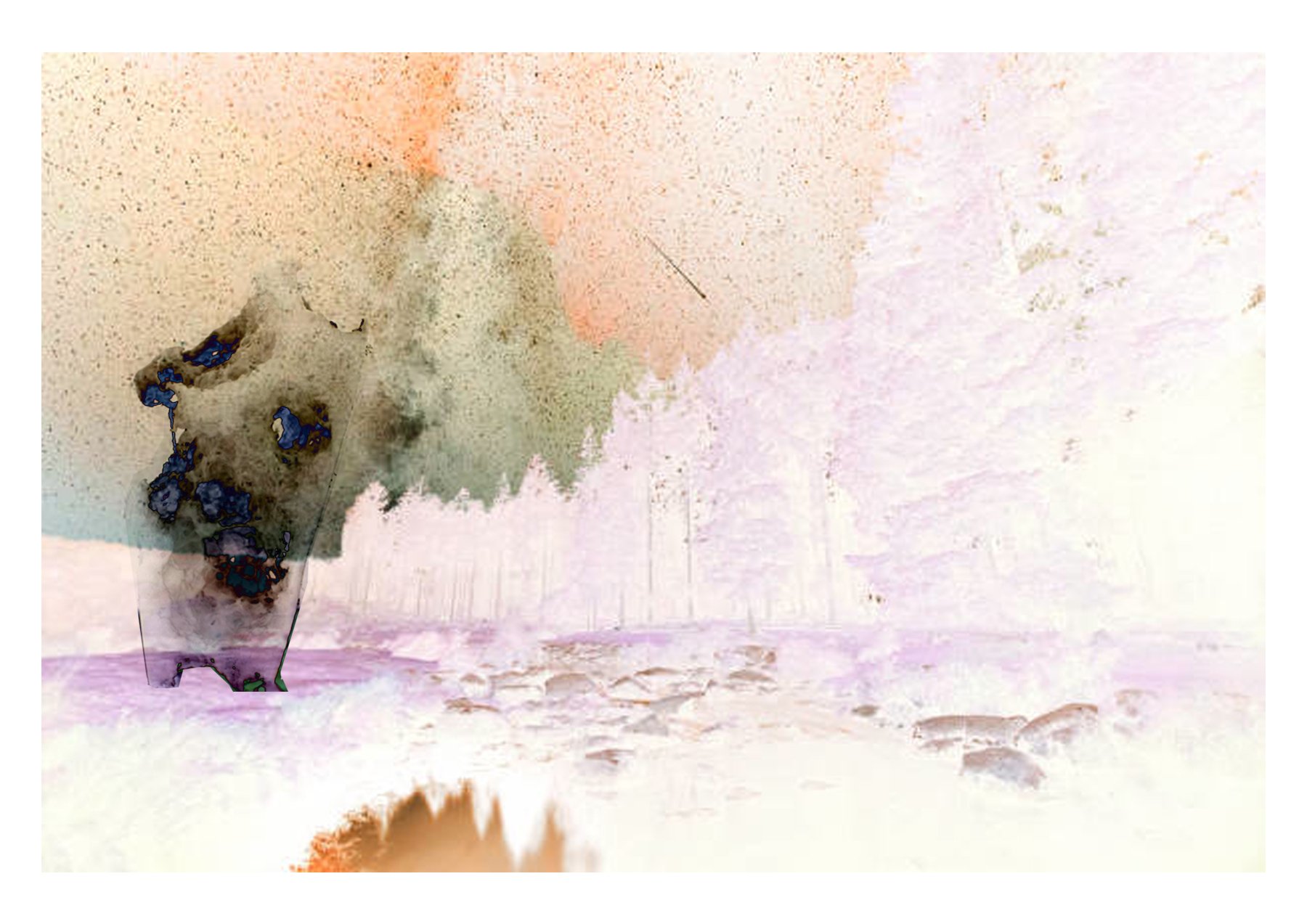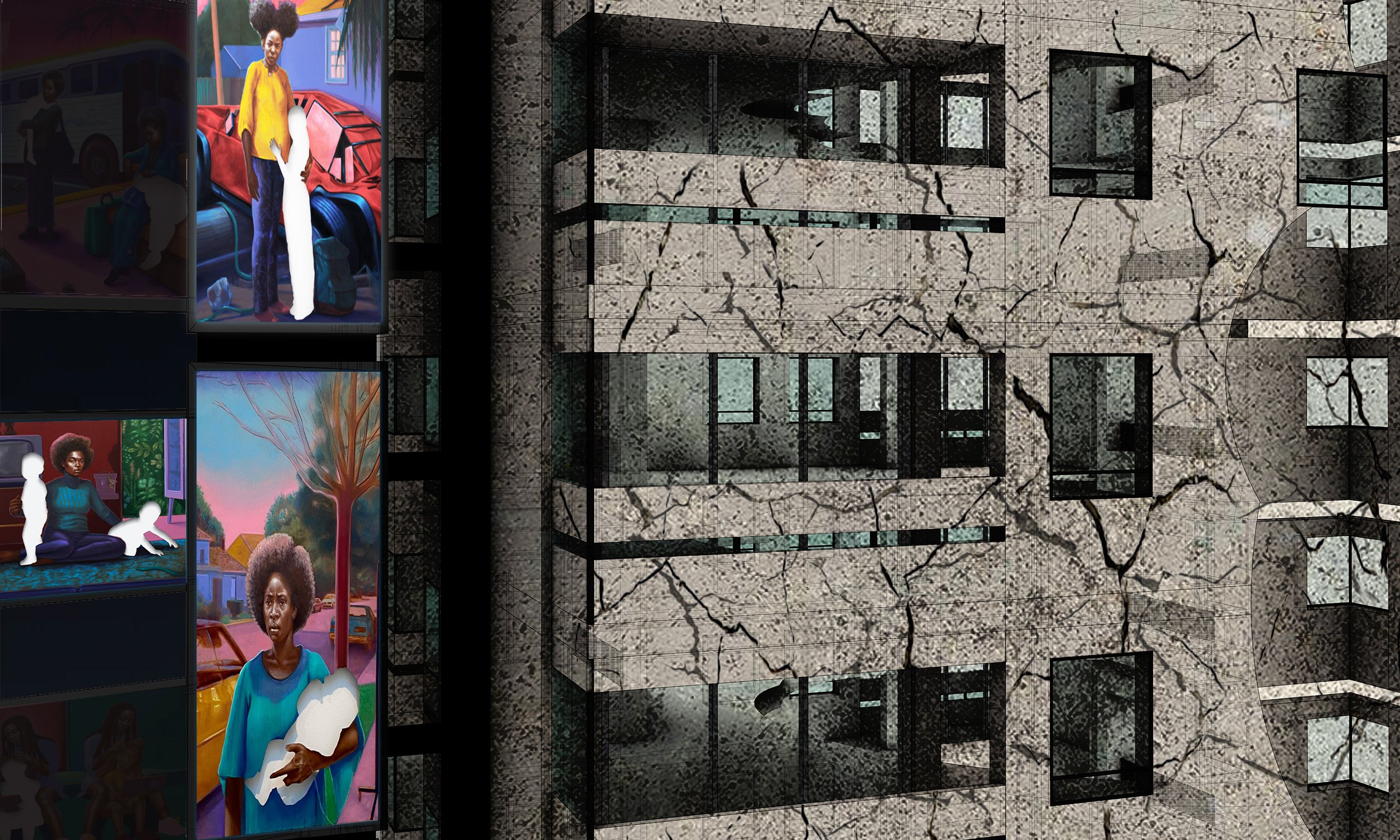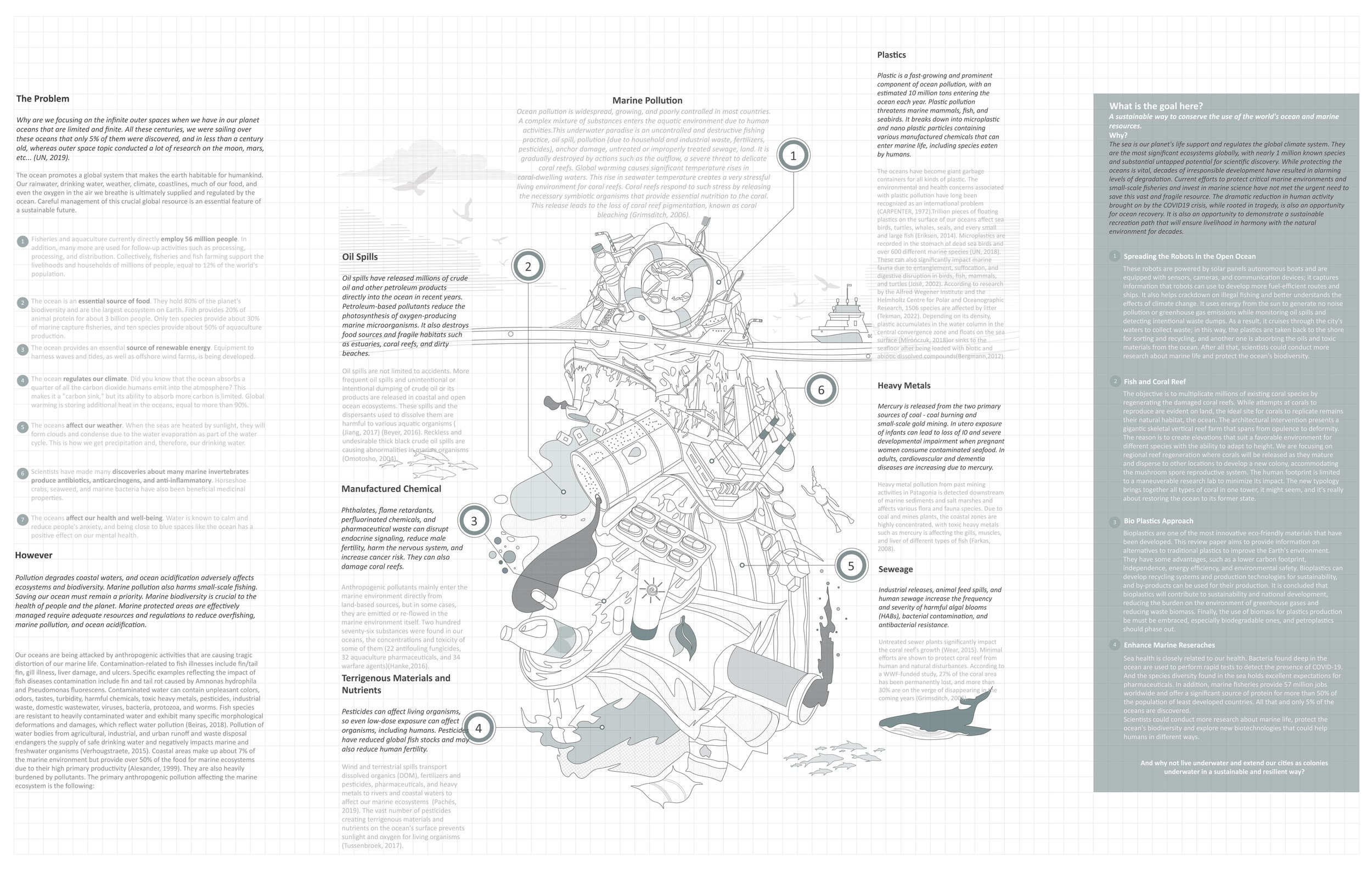ZoneFive.

Adela Gagiu: Serenity Venom - Incorporating jellyfish key features of behavior in this project creates the narrative of the relationship between humans and aquatic animals, exploring movement through light, form, and water. Just as jellyfish leave several stingers after contact that can continue to release jellyfish venom, this project aims to provide a similar effect, bringing the story of our co-existing nature that will impact user experience even after leaving the setting. By introducing elements such as the lightweightness and the bioluminescence of the jellyfish, will allow visitors and people of Watchet to gain a deeper understanding of the sea creatures in the ecosystem, in particular the jellyfish and to challenge the perception of artificiality we have in regards to buildings. The jellyfish might serve as a lesson to live as simply as possible, but they can also serve as a reminder that as humans, we should never take anything for granted. Our evolved position has provided us with a wealth of advantages, yet jellyfish show us that nature can still exist with the most basic of tools.

Zeina EL Masri: The rich history of Watchet combined with my analysis of the various aspects of both past and present current concerns led to the initial development of the main proposed idea. In addition to that, my personal experience in Watchet and my overview of the city led me to come up with the idea of a bio marine research centre that could protect our biodiversity and clean our oceans for a better future and work on decreasing the global warming caused by the wastes. This research hub would morph into a sprawling multi-functional hub for research, education, transport, and accommodation that would embrace researchers, scientists, students, startups, and last but not least, the community of Watchet. The design begins to understand the critical elements that operate the building. Their movement is a crucial aspect to consider to make the spaces clear in what type of activities they offer. The different functions will emphasize each space it offers in relation to the city, the users, and, most important, the ocean. We are creating robots that could float all over our oceans to collect research information and at the same time clean and enhance biodiversity.

Elena Jaramazovic: The project aims to correlate multiple timelines through a spatially based narrative. It recontextualizes the existence of humanity by guiding us through the remains of the last mass extinction event. Showing that we are a mere moment in the geological timeline discourages the anthropocentric approach we have come to have.

Ben Westmore: Coffee is integral to society, yet exploitative governments and corporations have left farmers in profound poverty with no way to climb out. This project seeks to help and upskill the rural coffee-producing population of Rwanda directly. The project builds off the fact that Rwanda lacks vital levels of road infrastructure and what bits it does have are corruptly made for the sole reason of exploitation by rich countries like China and the UAE. The intervention seeks to design exemplar hubs which would be connected via an autonomous drone network to deliver between drying stations and other hubs, as well as to export points. The hubs are built around the concept of 'uruganiriro which 'in Kinyarwanda, which translates to meaning 'where conversation take place'. These informal social interactions are key for the site to function as a hub for youth upscale and inclusion in the coffee industry. However, intervention in the Global South only goes so far. Increasing understanding and appreciation of the coffee supply chain to end-users within destination countries is paramount to the goal of ending the exploitative coffee industry. Alongside the Rwandan initiative, an installation on the current empty Wansbrough Paper Mill site. The installation seeks to project and map out part of the Rwandan coffee growing landscape 1:1 onto the concrete floor of the site through a set of projectors. Alongside this, there is a small structure to sit and enjoy and understand the depth of Rwandan coffee through the transmission of light.

Eloise Collier: A greenwashed resort where you can always be picture perfect (if the angle is right), set in a proposed tidal energy lagoon off the coast of Watchet, Somerset, explores the systems of consumerism that we all navigate through in the digital surveillance economy of social media, and what happens when the trends are no longer cool. The friction between Watchet’s community and the invading trendsetters becomes a narrative that helps illustrate social media tourism, gentrification, and its unavoidable fallout. Yet still, we’re being led by the trend cycles that perpetually encourage humankind to produce itself as a waste product.

Emily-Rose Garnett: This project proposes an architecture which reconnects communities with the urban metabolic systems that sustain them. It aims to give these communities decentralised control over the management of their resources, helping them to achieve greater social cohesion and transition to a localised circular economy.

Ivy Au: Haven - This project aims to provide an emotional haven for people in Hong Kong: after all the recent events happening in the city, citizens yearn to retreat from all the pain and hurt, to a place where all could reconnect with one another or find their inner peace.

Emily-Rose Garnett: This project proposes an architecture which reconnects communities with the urban metabolic systems that sustain them. It aims to give these communities decentralised control over the management of their resources, helping them to achieve greater social cohesion and transition to a localised circular economy.

Elena Jaramazovic: The project aims to correlate multiple timelines through a spatially based narrative. It recontextualizes the existence of humanity by guiding us through the remains of the last mass extinction event. Showing that we are a mere moment in the geological timeline discourages the anthropocentric approach we have come to have.

Filippos Perrakis Kollias: THE FLOATING SEAWEED FARMING VILLAGE - A boat community that needed to change the location of their settlement seeks a new home and hopes to make the first seaweed farming village on the coast of Watchet. Connecting the strong history of boat craftsmanship of the place, the design team is asked to create the new cabins of the village out of reused boat parts with the help and knowledge of a local team of experienced boat craftspersons.

Eloise Collier: A greenwashed resort where you can always be picture perfect (if the angle is right), set in a proposed tidal energy lagoon off the coast of Watchet, Somerset, explores the systems of consumerism that we all navigate through in the digital surveillance economy of social media, and what happens when the trends are no longer cool. The friction between Watchet’s community and the invading trendsetters becomes a narrative that helps illustrate social media tourism, gentrification, and its unavoidable fallout. Yet still, we’re being led by the trend cycles that perpetually encourage humankind to produce itself as a waste product.

Priscilla Mensah: PROTEST ARCHITECTURE - Racism is a crucial and timely topic. The project aims to bring attention to the Black Lives Matter movement protest through a documentation of both physical and digital protests. Protest Architecture is a critical instrument capable of becoming a part of the location it is built in. But what would these protests/movements look like if it was at your doorstep where you couldn’t ignore it? What would that society look like? 1. Balconies greatly enhance urban living by allowing residents to enjoy the view. But in Thamesmead, balconies were used for storage, not leisure. My project aims to change that by encouraging residents to use their balcony as a protest platform. I crafted an aluminium cantilever balcony that is lightweight, easy to assemble and move. With the future demolition of Thamesmead, these balconies can be used as pavilions over time, creating new gathering spaces as time goes.

Revathi Rajesh: The project influences the perceptions and emotions connected to death by reimagining and redressing death care as an opportunity to engage with humanity’s mortality and build a more compassionate and equitable society where communities seek compatible ways to integrate the enigmatic event of death into the fabric of life.

Filippos Perrakis Kollias: THE FLOATING SEAWEED FARMING VILLAGE - A boat community that needed to change the location of their settlement seeks a new home and hopes to make the first seaweed farming village on the coast of Watchet. Connecting the strong history of boat craftsmanship of the place, the design team is asked to create the new cabins of the village out of reused boat parts with the help and knowledge of a local team of experienced boat craftspersons.

Ivy Au: Haven - This project aims to provide an emotional haven for people in Hong Kong: after all the recent events happening in the city, citizens yearn to retreat from all the pain and hurt, to a place where all could reconnect with one another or find their inner peace.

Sameep Rai

Joseph Leander: THE BIRD AND THE ARKHIVER - This is Ark-Hive, the world museum and a long-term digital archive facility for languages built to stand the test of time and any challenge of natural or man-made disasters. The project uses hypersurfaces and combines physical and digital architecture to create the perfect Goldilocks sweet spot to deliver a truly human experience to the users.

Priscilla Mensah: ARCHITECTURE - Racism is a crucial and timely topic. The project aims to bring attention to the Black Lives Matter movement protest through a documentation of both physical and digital protests. Protest Architecture is a critical instrument capable of becoming a part of the location it is built in. But what would these protests/movements look like if it was at your doorstep where you couldn’t ignore it? What would that society look like? 1. Balconies greatly enhance urban living by allowing residents to enjoy the view. But in Thamesmead, balconies were used for storage, not leisure. My project aims to change that by encouraging residents to use their balcony as a protest platform. I crafted an aluminium cantilever balcony that is lightweight, easy to assemble and move. With the future demolition of Thamesmead, these balconies can be used as pavilions over time, creating new gathering spaces as time goes.

Revathi Rajesh: The project influences the perceptions and emotions connected to death by reimagining and redressing death care as an opportunity to engage with humanity’s mortality and build a more compassionate and equitable society where communities seek compatible ways to integrate the enigmatic event of death into the fabric of life.

Sameep Rai

Zeina EL Masri: The rich history of Watchet combined with my analysis of the various aspects of both past and present current concerns led to the initial development of the main proposed idea. In addition to that, my personal experience in Watchet and my overview of the city led me to come up with the idea of a bio marine research centre that could protect our biodiversity and clean our oceans for a better future and work on decreasing the global warming caused by the wastes. This research hub would morph into a sprawling multi-functional hub for research, education, transport, and accommodation that would embrace researchers, scientists, students, startups, and last but not least, the community of Watchet. The design begins to understand the critical elements that operate the building. Their movement is a crucial aspect to consider to make the spaces clear in what type of activities they offer. The different functions will emphasize each space it offers in relation to the city, the users, and, most important, the ocean. We are creating robots that could float all over our oceans to collect research information and at the same time clean and enhance biodiversity.




















